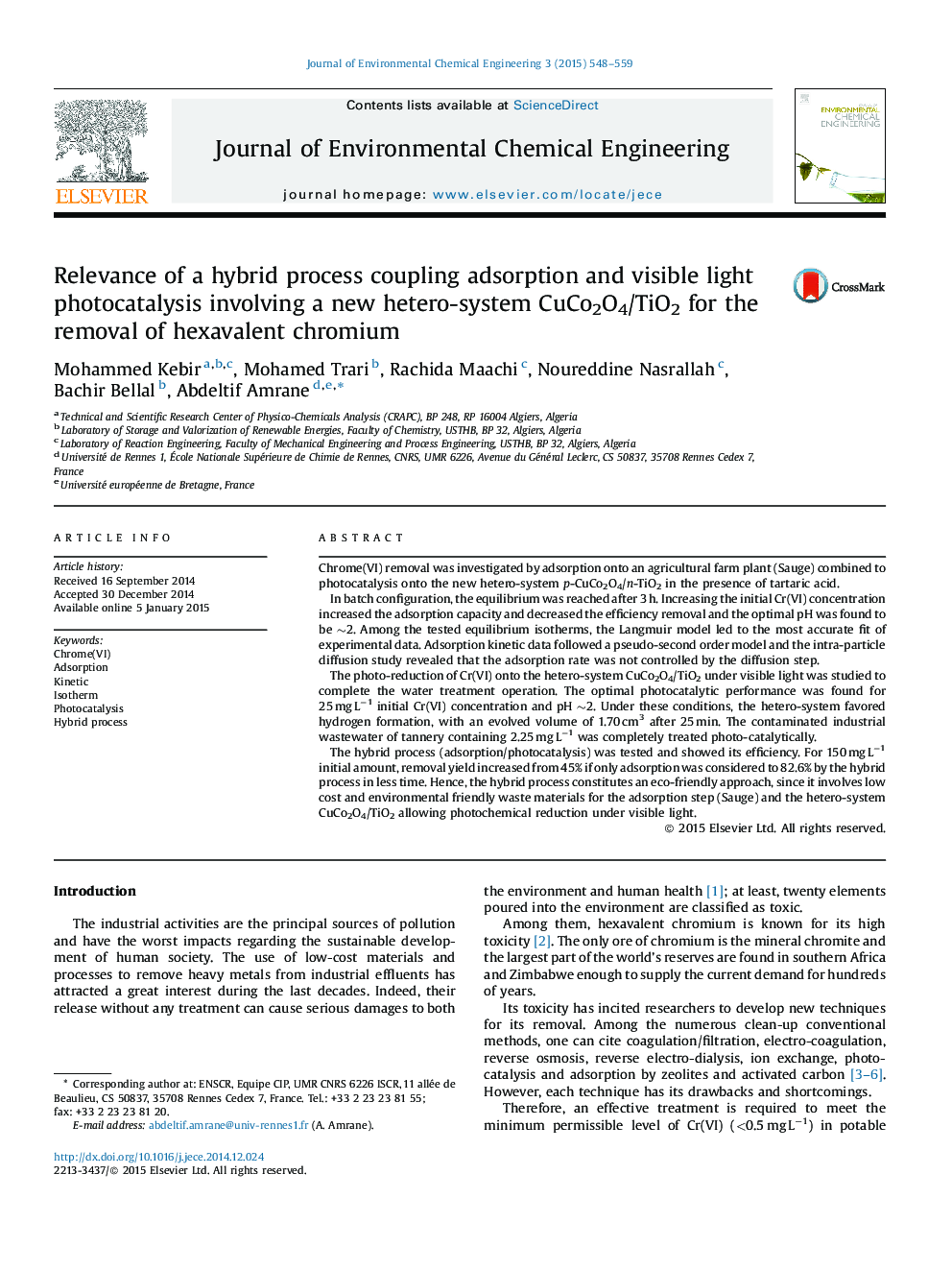| کد مقاله | کد نشریه | سال انتشار | مقاله انگلیسی | نسخه تمام متن |
|---|---|---|---|---|
| 222441 | 464275 | 2015 | 12 صفحه PDF | دانلود رایگان |

• Adsorption onto Sauge was combined to photocatalysis for Cr(VI) removal.
• Photocatalysis with new heterojunction system p-CuCo2O4/n-TiO2 under visible light.
• Tannery wastewater (2.25 mg L−1 Cr(VI)) was completely treated photocatalytically.
• The hybrid process showed its efficiency, 82% removal of 150 mg L−1 initial Cr(VI).
Chrome(VI) removal was investigated by adsorption onto an agricultural farm plant (Sauge) combined to photocatalysis onto the new hetero-system p-CuCo2O4/n-TiO2 in the presence of tartaric acid.In batch configuration, the equilibrium was reached after 3 h. Increasing the initial Cr(VI) concentration increased the adsorption capacity and decreased the efficiency removal and the optimal pH was found to be ∼2. Among the tested equilibrium isotherms, the Langmuir model led to the most accurate fit of experimental data. Adsorption kinetic data followed a pseudo-second order model and the intra-particle diffusion study revealed that the adsorption rate was not controlled by the diffusion step.The photo-reduction of Cr(VI) onto the hetero-system CuCo2O4/TiO2 under visible light was studied to complete the water treatment operation. The optimal photocatalytic performance was found for 25 mg L−1 initial Cr(VI) concentration and pH ∼2. Under these conditions, the hetero-system favored hydrogen formation, with an evolved volume of 1.70 cm3 after 25 min. The contaminated industrial wastewater of tannery containing 2.25 mg L−1 was completely treated photo-catalytically.The hybrid process (adsorption/photocatalysis) was tested and showed its efficiency. For 150 mg L−1 initial amount, removal yield increased from 45% if only adsorption was considered to 82.6% by the hybrid process in less time. Hence, the hybrid process constitutes an eco-friendly approach, since it involves low cost and environmental friendly waste materials for the adsorption step (Sauge) and the hetero-system CuCo2O4/TiO2 allowing photochemical reduction under visible light.
Journal: Journal of Environmental Chemical Engineering - Volume 3, Issue 1, March 2015, Pages 548–559